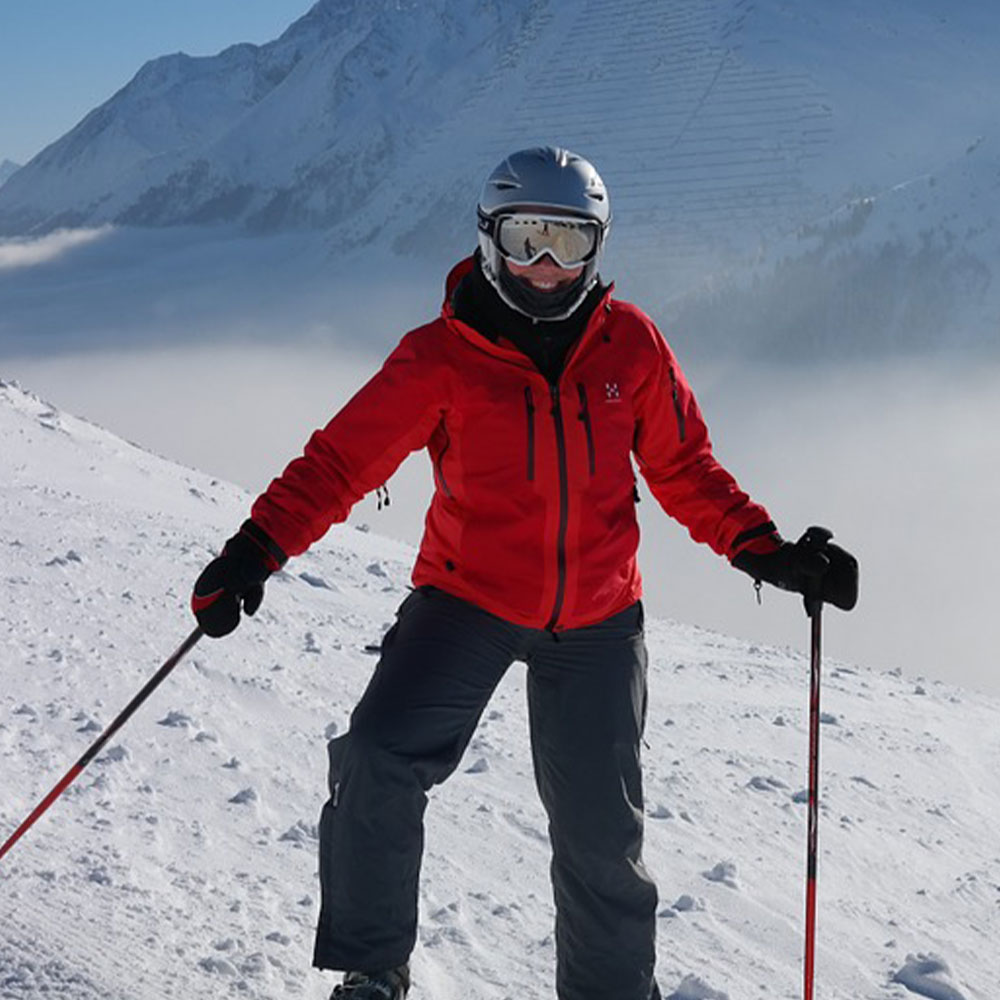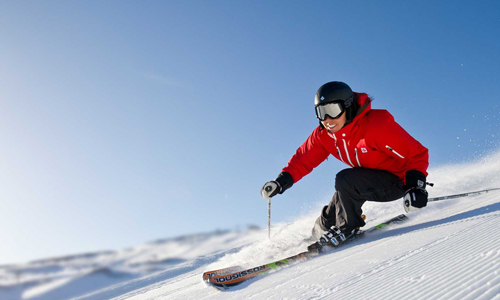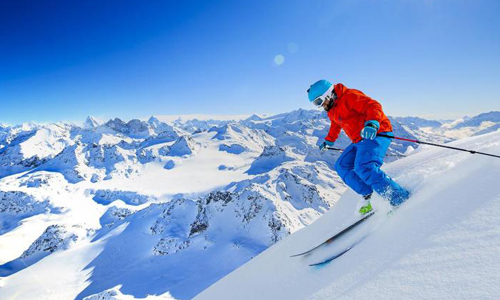Warm Up To The Frozen Slopes With the Right Gear
Author

A keen runner, skier and nuts about cycling. Karl lives in Cumbria, where he loves encouraging his two children to follow in his outdoor lifestyle. Whilst out and about keeping active, Karl keeps a diary and shares it with Outdoor Look.
 Skiing is a fun activity. I love skiing and I would not trade it for any other pass time. Whenever I find some free time, I tag along with my buddies and head north towards Breckenridge. It welcomes me with a white carpet as I make my way to the Breckenridge Ski resort. Initially, when I started skiing, around 20 years ago, I can recall how I struggled while managing my kit. I could never understand the concept of winter clothing and I was not able to find the balance between speed, warmth, and style (20 years ago I was a city slicker). Now, after years of skiing in a variety of weather and terrain conditions, I think I have cracked the code.
Skiing is a fun activity. I love skiing and I would not trade it for any other pass time. Whenever I find some free time, I tag along with my buddies and head north towards Breckenridge. It welcomes me with a white carpet as I make my way to the Breckenridge Ski resort. Initially, when I started skiing, around 20 years ago, I can recall how I struggled while managing my kit. I could never understand the concept of winter clothing and I was not able to find the balance between speed, warmth, and style (20 years ago I was a city slicker). Now, after years of skiing in a variety of weather and terrain conditions, I think I have cracked the code.
Hand and Neck Protection
You cannot afford to compromise on dexterity, when you are moving through hazard-ridden skiing trails. Cold reduces the strength of your grip and can leave you in a difficult situation. One should protect his/her hands by wearing mittens. If you suffer from cold hands, you can bolster the protective shield by wearing silk glove liners under mittens. For protecting the neck, it is best to wear a woolen muffler or a balaclava and neck warmer.
Head and Eye Protection
 Your head is the most important part of your anatomy and you don't want it to be exposed to unrelenting chilly weather. If the cold gets to your head, you won’t be able to think straight and maneuver your way through the tricky snowy slopes. Depending on the temperature, you can choose between a wooly hat or a helmet. If the weather is way too cold, you can wear a thin helmet liner or cotton headband. Wearing extra protection will prevent the wind whistling through the little holes in the helmet’s ear pads. You can put on woolly hats lined with fleece, for double insulation and extra cosiness. For protecting the eyes, it is best to invest in high-quality goggles.
Your head is the most important part of your anatomy and you don't want it to be exposed to unrelenting chilly weather. If the cold gets to your head, you won’t be able to think straight and maneuver your way through the tricky snowy slopes. Depending on the temperature, you can choose between a wooly hat or a helmet. If the weather is way too cold, you can wear a thin helmet liner or cotton headband. Wearing extra protection will prevent the wind whistling through the little holes in the helmet’s ear pads. You can put on woolly hats lined with fleece, for double insulation and extra cosiness. For protecting the eyes, it is best to invest in high-quality goggles.
Layering
Layering is the key to staying warm on the snowy hilltops. Unlike a large coat that is bulky and weighs you down, layers can be customised as per an individual’s choice. When you add different clothes in your ensemble, you create multiple layers that are able to trap air. Wearing clothes, one-over-another, creates a mechanism that allows you to stay protected from the elements. With the added protection of layers, you can counter the threat of cold-related ailments like reduced blood flow and hypothermia. It is best to start with a baselayer made of Merino wool or polyester. As your mid-layer, you can choose a fleece jacket and then complete the look with the ever-reliable down/shell jacket.
Feet Protection
In the past, I used to wear multiple layers of socks to prevent my feet from the cold. However, I realised soon enough that my many socks were adding unnecessary bulk to my feet, restricting my movement. I recommend that you buy good quality thin Merino ski socks that can keep you cosy at all times. Also, invest in high-quality ski boots from trusted brands such as Roxy/Quiksilver or Trespass. Buying customised shoes that fit you perfectly is a great idea. It is also advised that you keep your skiing style in mind and buy the shoes accordingly.
All the above tips can help you keep warm and ski safely in unforgiving cold conditions. By breaking your gear in before you head on a trip, you will be able to understand its impact on your movement. This will help you get familiar with the kit, and you will be able to ski with confidence.
Author

A keen runner, skier and nuts about cycling. Karl lives in Cumbria, where he loves encouraging his two children to follow in his outdoor lifestyle. Whilst out and about keeping active, Karl keeps a diary and shares it with Outdoor Look.
Categories
- Sport (28)
- Product Reviews (3)
- Team Outdoor Look (7)
- Mike Wild (2)
- Mike Payton (2)
- Suse Hammond-Pears (3)
- Snowboarding (12)
- Latest Offers (105)
- Shop Talk (1)
- Competitions (7)
- Walking (413)
- Lifestyle Fashion (8)
- Travel (86)
- Kit Guides (176)
- Workwear Clothing (6)
- Safety Workwear (4)
- Health/Fitness (289)
- Skiing (91)
- Great Outdoors (1316)
- Cycling (92)
- January 2025
- December 2024
- November 2024
- October 2024
- September 2024
- August 2024
- July 2024
- June 2024
- May 2024
- April 2024
- March 2024
- February 2024
- January 2024
- December 2023
- November 2023
- October 2023
- September 2023
- August 2023
- July 2023
- June 2023
- May 2023
- April 2023
- March 2023
- February 2023
- January 2023
- December 2022
- November 2022
- October 2022
- September 2022
- August 2022
- July 2022
- June 2022
- May 2022
- April 2022
- March 2022
- February 2022
- January 2022
- December 2021
- November 2021
- October 2021
- September 2021
- August 2021
- July 2021
- June 2021
- May 2021
- April 2021
- March 2021
- February 2021
- January 2021
- December 2020
- November 2020
- October 2020
- September 2020
- August 2020
- July 2020
- June 2020
- May 2020
- April 2020
- March 2020
- February 2020
- January 2020
- December 2019
- November 2019
- October 2019
- September 2019
- August 2019
- July 2019
- June 2019
- May 2019
- April 2019
- March 2019
- February 2019
- January 2019
- December 2018
- November 2018
- October 2018
- September 2018
- August 2018
- July 2018
- June 2018
- May 2018
- April 2018
- March 2018
- February 2018
- January 2018
- December 2017
- November 2017
- October 2017
- September 2017
- August 2017
- July 2017
- June 2017
- May 2017
- April 2017
- March 2017
- February 2017
- January 2017
- December 2016
- November 2016
- October 2016
- September 2016
- August 2016
- July 2016
- June 2016
- May 2016
- April 2016
- March 2016
- February 2016
- January 2016
- December 2015
- November 2015
- October 2015
- September 2015
- August 2015
- July 2015
- June 2015
- May 2015
- April 2015
- March 2015
- February 2015
- January 2015
- December 2014
- November 2014
- October 2014
- September 2014
- August 2014
- July 2014
- June 2014
- May 2014
- April 2014
- March 2014
- February 2014
- January 2014
- December 2013
- November 2013
- October 2013
- September 2013
- August 2013
- July 2013
- June 2013
- May 2013
- April 2013
- March 2013
- February 2013
- January 2013
- December 2012
- November 2012
- October 2012
- September 2012
- August 2012
- July 2012
- June 2012
- May 2012
- April 2012
- March 2012
- February 2012
- January 2012
- December 2011
- November 2011
- October 2011
- September 2011
- August 2011
- May 2010
- April 2010
- March 2010
- February 2010
- January 2010
- November 2009
- October 2009
- September 2009
Submit a Comment